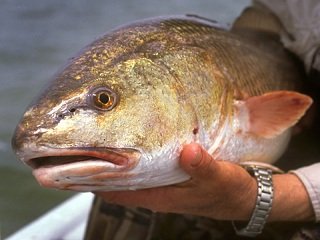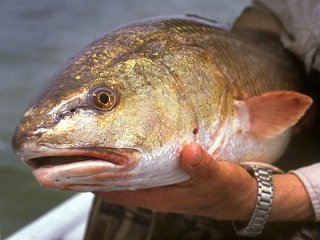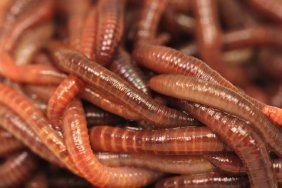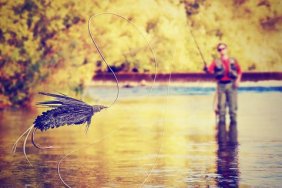 One of my favorite fish to catch—and eat—is redfish. Ever since I first landed my first one while fishing the marshy shallows of the Gulf Coast, I’ve been hooked. I’m not the only one who loves chasing tailspots, though, as they’re a popular target among the fishing community, and are even the subject of tournaments and leagues. Today, we’ll learn more about this amazing game fish in today’s Fish File.
One of my favorite fish to catch—and eat—is redfish. Ever since I first landed my first one while fishing the marshy shallows of the Gulf Coast, I’ve been hooked. I’m not the only one who loves chasing tailspots, though, as they’re a popular target among the fishing community, and are even the subject of tournaments and leagues. Today, we’ll learn more about this amazing game fish in today’s Fish File.
Golden-colored and muscular, redfish inhabit waters ranging from the Gulf of Mexico all the way around through the Atlantic Ocean up to Massachusetts. Typically, redfish have a black spot near their tail—though, in some instances spots can appear further up the body—that imitates an eye. This is a defense mechanism to fool predators, as it makes it appear that the fish’s tail is actually a head. When a predator strikes their tail, redfish have a stronger chance of escaping. Redfish can grow to massive sizes, with fish reaching over 27 inches being classified as “bull reds.” Redfish have a downward facing mouth, which enables them to forage for food along the sandy bottom. They feed primarily on crab and shrimp, as well as baitfish such as mullet or croaker.
Anglers seeking redfish can land them with a variety of tactics. Artificial lures, such as small swimbaits, jerkbaits, or spinnerbaits with a single, gold Colorado blade are deadly, but my go-to is always a gold weedless spoon, like the Johnson Silver Minnow. My biggest redfish to date was caught on one and I’ve had great luck with them whenever I’ve gone out. Of course, live bait will always catch reds, as well. Mullet or croakers are great for big reds, especially at night, and shrimp under a cork popper will always yield results, especially near jetties where redfish like to ambush prey from within rocks.
People target redfish for many reasons. Some love the fight, others enjoy the hunt for tailing reds, and some anglers simply enjoy the taste of redfish to not catch them. Whatever your reason, hopefully today’s Fish File shed some new light on such an amazing species!








